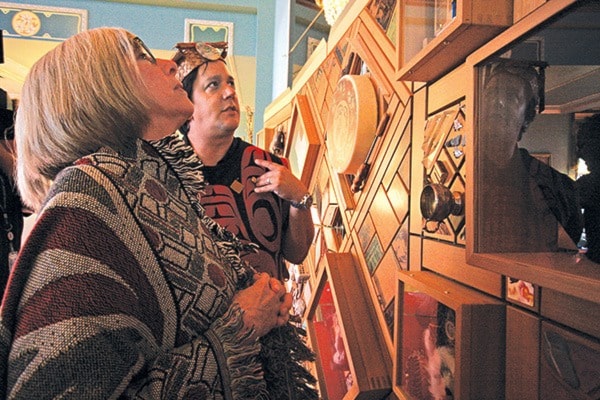When First Nations artist Carey Newman first came up with the idea for a Witness Blanket more than four years ago, he never imagined he’d still be on the emotional journey.
Already an artist following the traditions of his Kwagliuth culture, Newman was called upon to create a commemorative national monument to mark the work of the Truth and Reconciliation Commission — established by the federal government in 2008 with a five-year mandate of informing all Canadians about what happened at Indian Residential Schools.
Gathering pieces of the schools, government buildings, churches and other related artifacts such as severed braids of hair, moccasins, old-fashioned skates and photographs, Newman created a 40-foot long, eight-foot tall, wood-based structure containing 887 objects from 77 communities across Canada. Some spaces were left empty to honour the children who never came home.
After two years of travelling through communities across Canada, the Witness Blanket (inspired by a woven blanket), has now come back to Victoria for the upcoming visit of Prince William and his wife Kate. Newman still gets emotional whenever he talks about the journey.
“It’s brought me closer to my family. My dad’s told us more and more about his time at residential schools and I have a better understanding of him and therefore I have a better understanding of me. If that happens for a few other families or individuals who take part or come and see the blanket, then I think that’s what the whole thing’s about,” said Newman, noting the tour will continue for the next five years.
The pieces that resinate with him most are in a box that has a piece of the apple tree from the orchard of the school his father went to, along with braids from his sister, who cut her hair in honour of her father and the children who had to cut off their braids in order to attend school.
“It’s been a very emotional journey and it continues to be. I keep thinking that eventually I’ll get to a point where I’ve seen or heard everything, but every time I go to a new city or town to talk about the blanket, I meet somebody who has a story.”
Indian Residential Schools date back to the 1870s, with more than 130 located across the country at one point, the last one closing in 1996. More than 150,000 First Nations, Metis and Inuit children were taken from their families and placed in the government-funded, church run schools. Many were forbidden to speak their language and practice their own culture. Some also suffered emotional, physical and sexual abuse.
The tour of the Witness Blanket was first launched in Victoria in 2014. Some of the stops included a stay in Ottawa during the closing ceremony of the Truth and Reconciliation Commission and an exhibit at the Canadian Museum for Human Rights.
Last week, the blanket was installed at Government House where it will privately be on display for the royal couple’s visit to Victoria Sept. 24, Sept. 29 and Oct. 1. Following their stay, the blanket will be moved to Vancouver Island University in Nanaimo for the rest of the year.
So far, Newman said the response to the Witness Blanket has varied.
“A lot of the impact that it has is amongst people who didn’t know before about residential schools...I think it creates a different kind of access point for us to open the conversation around reconciliation,” said Newman, who lives in Fernwood. “Our hope is people from every community across the country join us by standing witness to this important part of Canadian history. We, as a country, need to collectively honour the survivors, remember the children who were lost and find a better way to move forward.”
